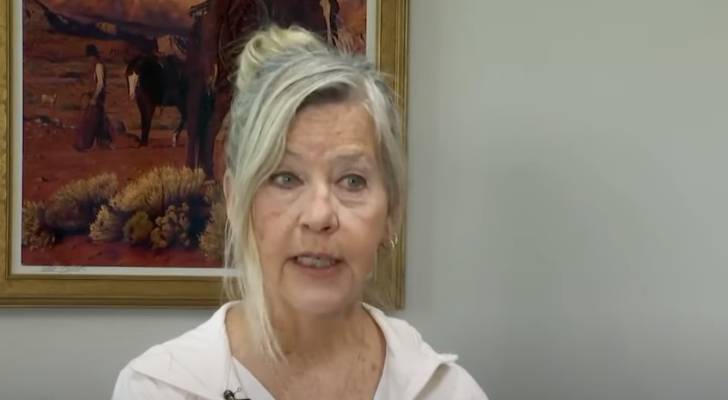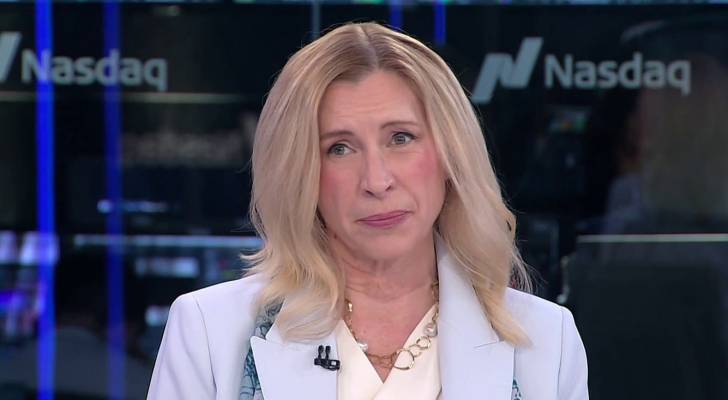I’m 28, recently married, with zero debt — I’ve always wanted to own a house but the market seems so lousy right now. Is it smarter to invest in the S&P 500 and save up while renting for now?


Jamie, 28, recently married her long-time boyfriend, Ben. They’ve always been careful with their money as a couple, sticking to a monthly budget and saving 15% of their salaries. They even opted for a small, simple wedding rather than racking up debt. Jamie and Ben rented a small one-bedroom apartment when they moved in together […]
‘They put the fear of God in me’: Albuquerque woman, 67, lost her life savings to an Apple phishing scam — now she ‘can’t remake that money to retire.’ What she wishes she’d done differently


Losing your life savings can be devastating, especially when you’re close to retirement. But for one Albuquerque resident, Judy Hartmann-Ortiz, it’s all the more painful because she was scammed out of the money. Don’t miss I’m 49 years old and have nothing saved for retirement — what should I do? Don’t panic. Here are 5 […]
I’m 56 and my wife died suddenly a few weeks ago. I’m finally ready to think about the future, but she made 65% of our income and I won’t be able to afford our bills on my own — what do I do?
Consider this scenario: Paul’s wife unexpectedly passed away a few weeks ago. Aside from the shock of losing the love of his life, he has a new source of stress he wasn’t prepared for: His wife made 65% of their household income. And he can’t afford the mortgage on his own. Don’t miss I’m 49 […]
More and more older Americans are worried Social Security won’t be there for them — but that concern looks very different based on political party. Here’s why there’s such a big divide


With cuts to Social Security staffing and programs, rumors of privatization and an impending funding shortfall, it’s no wonder some Americans are worried about the program’s future. Nearly one in three adults age 60 or older now doubt their retirement benefit will be there when they need it, according to a new poll from the […]
‘A slow bleed of support’: This economic expert is warning a ‘large number of foreign investors’ are ‘worried’ about investing in America — why she says they’re losing faith in the US


U.S. stocks had been outperforming the rest of the world for years — until a slew of tariffs and trade policies spooked investors and caused global markets to plunge in March. Now, some foreign investors are rethinking their exposure to U.S. markets. That’s according to economic expert Rebecca Patterson, who previously served as Bridgewater’s chief […]
OIder Americans got fleeced online last year, FBI says, losing an average $83,000 to scams. Here’s how to learn from their mistakes
Being robbed doesn’t always happen at gunpoint. Cybercriminals can sneak into your home through your computer and your phone — and may make you an unwitting accomplice to your own robbery. It’s a problem for everyone, but if you’re over 60, you’re particularly vulnerable. Last year, losses to cybercrime increased 33% from 2023 to a […]
I’ve worked for the county for 10 years making more than $100K with a pension — but I hate my job and dread going into my toxic workplace every single day. Should I quit or just tough it out?


For almost a decade, Joe has worked for the county, pulling in an enviable salary of more than $100K a year. Not only does he have job security, but he also gets generous vacation time, health insurance and a pension. His friends and family think he’s got it made. But every morning, Joe dreads going […]
Americans of all ages are suddenly cooling on Florida — and this 1 hot spot has been hit the hardest. 3 reasons this once trendy city is seeing ‘the biggest slowdown’ in new residents


Florida has long been a magnet for Americans looking for a better life. Low taxes, affordable housing, a low cost of living and pleasant winter weather have made it a popular move — and not just for retirees. Young people seeking economic opportunities have come in search of jobs in technology, health care and tourism […]
My 83-year-old mother pays her rent on time, but she’s a hoarder — her place is crammed with old newspapers and other garbage. If the condo board finds out, can her housing be taken away?


Laura’s 83-year-old mother is still sharp, stays active and pays her bills on time. But Laura no longer visits because her mother doesn’t want to host anyone in her “messy” condo. The problem is, it’s more than a mess; her mom is a hoarder. Don’t miss I’m 49 years old and have nothing saved for […]
‘We’re looking at a slowdown’: 3 warning signs point to a U.S. recession. Find out what the indicators are and how to protect your finances in the months ahead


The U.S. is not in a recession — yet. But with policy uncertaintly around tariffs, mass deportations and Department of Government Efficiency (DOGE) cuts, some economic observers believe the odds are rising. “We’ve got a real uncertainty problem, it’s going to be hard to fix that,” former Treasury Secretary Lawrence Summers said in an interview […]